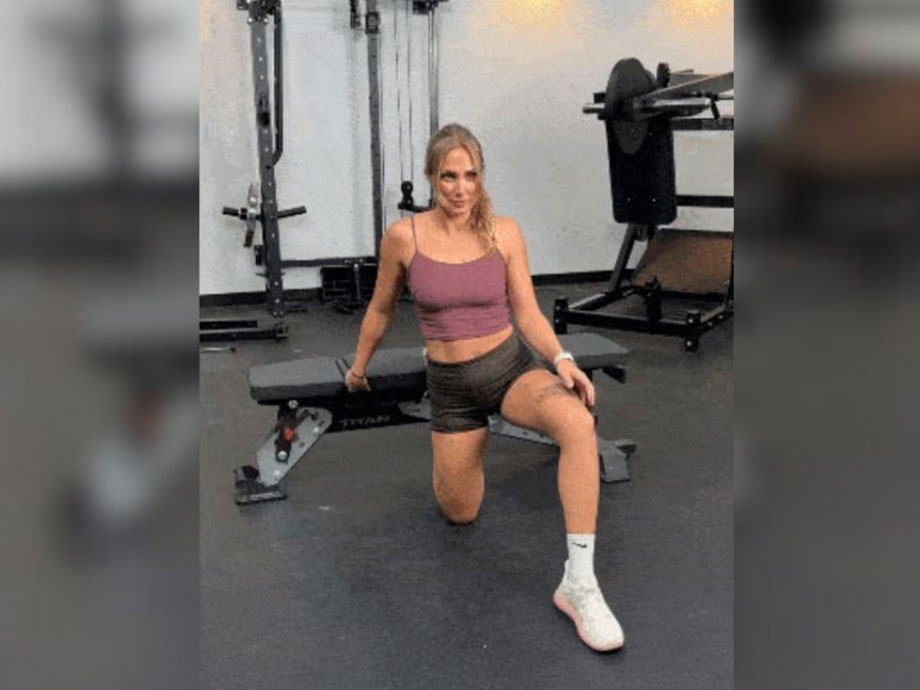We test and review fitness products based on an independent, multi-point methodology. If you use our links to purchase something, we may earn a commission. Read our disclosures.
We all have our off days when peeling ourselves off the couch seems impossible, and we want nothing more than to throw on our favorite movie, fix ourselves a snack, and curl up under a blanket while the world melts away.
We get it, and you need that now and then for your mental health, but what if I told you that you could get some R&R and do something that promotes greater mobility and flexibility, too? And you don’t even have to leave the couch!
RELATED: Exercise and Mental Health
It sounds too good to be true, but it’s not. It’s called the couch stretch, and this exercise is one of the most underrated ways to loosen up your tight hip flexors, relieve lower back pain, and improve your range of motion. Kate Meier, NASM-CPT, USAW-L1, CF-L1, and GGR senior director of content, joins us to provide step-by-step instructions, variations, alternatives, benefits, and more!
Have a seat, and let’s get started!
How To Do the Couch Stretch
Popularized by physical therapist, CrossFit trainer, and New York Times best-selling author Kelly Starrett, the couch stretch is a simple and accessible way to release your hip flexors and engage your glutes, which improves lower-body mobility, helps alleviate low back pain, and promotes greater wellness, all from the comfort of your sofa.
How to do it:
- Stand in front of your couch (or a weight bench or other slightly elevated surface).
- Lift your left leg, bend your left knee, and place it on the seat cushion behind you.
- Place your left foot on the top of the couch, pointing your toes upward. Your right leg should remain stable with your right knee stacked directly over your right foot and ankle.
- Engage your core and glutes, then gently drive your left knee down into the couch.
- Hold the position for 30 to 60 seconds, then release.
- Repeat the stretch on your other side.
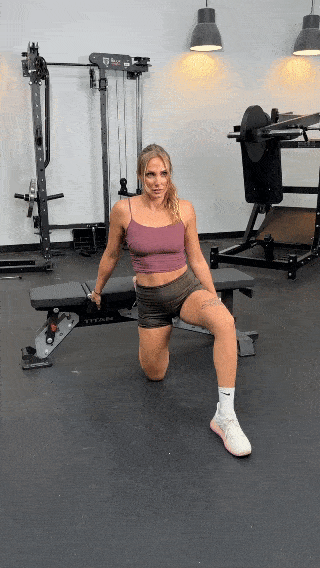
Modifications
- Dial it back: Getting into the couch stretch position can be cumbersome if you have chronically tight hip flexors, so you may want to start with a low couch stretch. To do a low couch stretch, start in a low lunge, put your hands on the floor for stability, and place your back knee on the floor where the couch meets the ground.
- Make it harder: Adding a twist to your couch stretch adds some extra challenge, but, if you really want to open your hips, try anchoring a resistance band to something sturdy in front of you and performing your couch stretch against the resistance.
RELATED: 13 Posterior Chain Exercises
How To Do the Couch Stretch At Home
The good news about the couch stretch is you only need a couch and your lovely self. In fact, you technically don’t even need the couch, despite it being in the name, because a chair, weight bench, or plyometric box works just as well in a pinch.
So, the couch stretch is bona fide, certified, and made for your at-home mobility routine.
Couch Stretch Variations
- Couch stretch with a twist: Add an upper-body twist to your couch stretch to increase activation of your psoas, obliques, and latissimus dorsi muscles.
- Side bend couch stretch: Performing a side bend during your couch stretch is another way to lengthen and strengthen your obliques while intensifying the stretch.
- Front-foot-elevated couch stretch: It’s much more difficult than it looks, but if you can get your front leg up on a step-up platform or short plyo box, you’ll increase the stretch in the anterior region of your hips and glutes.
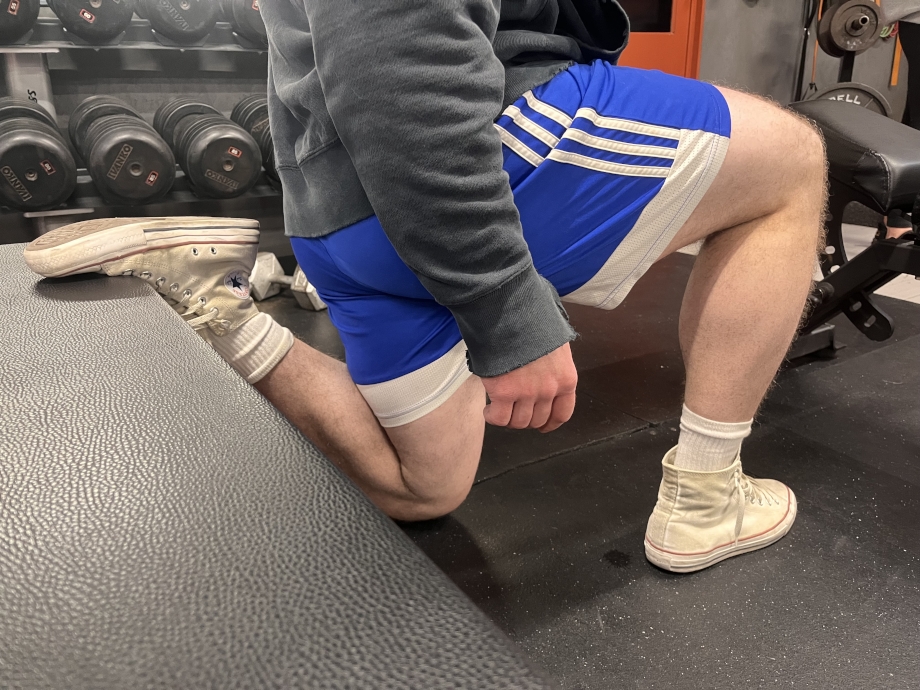
RELATED: Best Plyo Boxes
Couch Stretch Alternatives
The couch stretch is a real hip opener, but it’s not the only way to increase your lower-body mobility and flexibility. Whether you’re working up to the couch stretch or looking for additional stretches to round out your routine, consider some of our couch stretch alternatives.
Hip Flexor Stretch
Why do it: A 2021 study in Musculoskeletal Science and Practice1 concluded that individuals who sit for prolonged periods suffer from hip flexor tightness and decreases in their passive hip extension. Stretching your hip flexors may offset these effects, improve your balance, reduce your risk of injury, and lighten the load on your quadriceps, according to the International Journal of Environmental Research and Public Health2.
How to do it:
- Stand with your chest tall, back straight, and feet shoulder-width apart.
- Step forward with your right foot, shift your weight forward, and bend both knees.
- Continue until your front knee forms a 90-degree angle and your left knee lightly touches the mat.
- Hold the position for 15 to 30 seconds, then release and return to the starting position.
- Repeat the stretch for your other side.
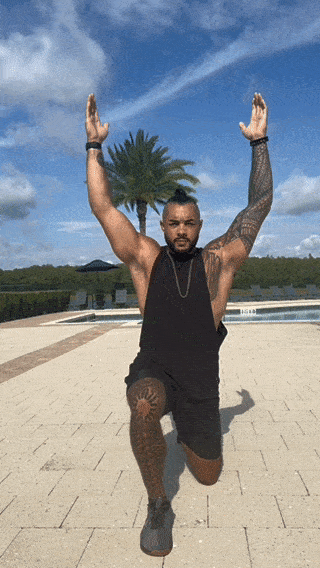
Butterfly Stretch
Why do it: Talk about bang for your buck; this beginner-friendly stretch improves your hip, inner thigh, and sacroiliac joint mobility big time. The butterfly stretch also revamps your posture, helps relieve back pain, increases circulation, and promotes relaxation.
How to do it:
- Sit on the floor, bend your knees outward, and place the soles of your feet together.
- Gently press down on your knees with your hands or elbows until you feel a slight stretch.
- Hold for 15 to 30 seconds, then release.
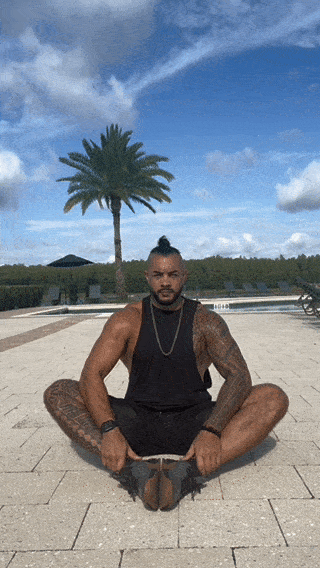
Figure-Four Stretch
Why do it: “The figure-four stretch may seem tricky at first,” says Kate Meier, NASM-CPT, USAW-L1, CF-L1, “but the position really lets you open your hips and stretch the often-overlooked piriformis muscle, which other stretches don’t target with as much intensity.”
How to do it:
- Lie on your back with your knees bent and your feet flat.
- Lift your left leg into the air and rest your left ankle just above your right knee.
- Reach forward with both arms, bringing your left arm through your legs, and grab your right leg with both hands just below the backside of your knee.
- Pull your knee into your chest until you feel a light stretch.
- Hold for 15 to 30 seconds, then release.
- Repeat the stretch on your other side.
RELATED: Best Knee Stretches
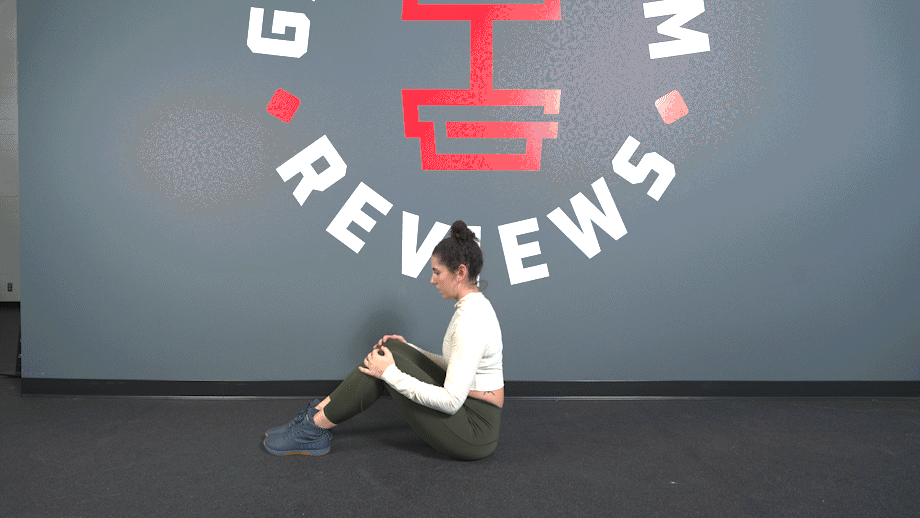
Standing Quad Stretch
Why do it: Your quadriceps are mostly responsible for extending your knees, but they also help you flex your hips. So, if you have chronically tight hip flexors, spending some time doing the classic standing quad stretch may help you remedy that and improve lower-body function.
How to do it:
- Stand with your chest tall, back straight, and feet shoulder-width apart.
- Lift your left foot behind you and grab it with your left hand.
- Pull your foot toward your glutes until you feel the stretch.
- Hold for 15 to 30 seconds, then release.
- Repeat the stretch on your other side.
RELATED: Best Quad Stretches
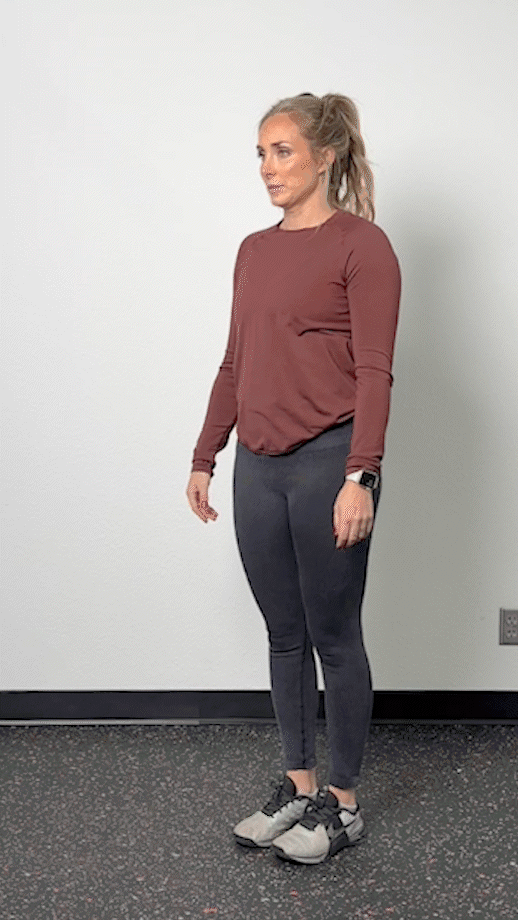
90-90 Stretch
Why do it: The 90-90 stretch is another beginner-friendly exercise that targets your psoas, hip abductors, hip adductors, and glutes, alleviating muscle tightness and increasing your overall lower-body range of motion (ROM) and function.
How to do it:
- Sit on the floor with your knees loosely bent.
- Shift your bodyweight to the left, creating a 90-degree angle with your left knee.
- Extend your right leg to the side and bend your right knee 90 degrees as well.
- Lean forward until you feel a gentle stretch, then hold for 15 to 30 seconds.
- Release, then switch your legs and repeat on your opposite side.
RELATED: Adduction vs Abduction
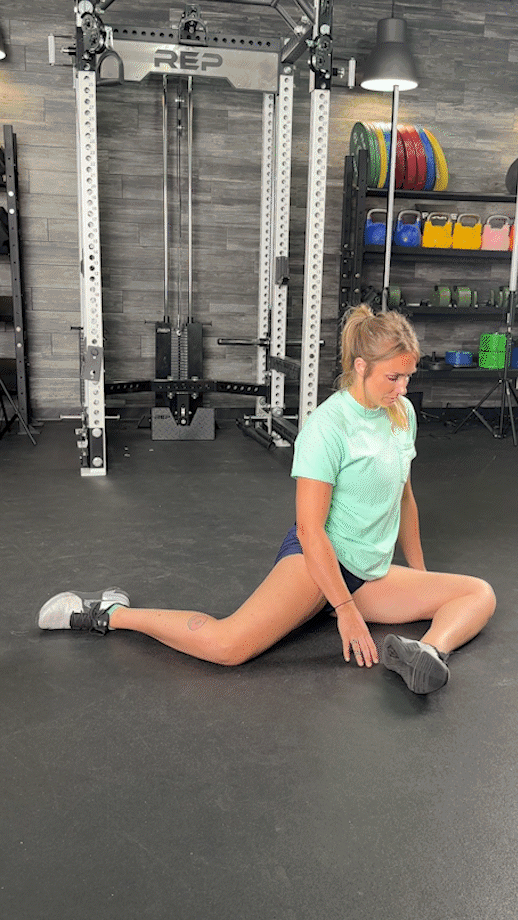
Pigeon Pose
Why do it: The pigeon pose may require some flexibility, but it’s one of the best stretches for releasing tight hip flexors, increasing hip mobility, and relieving lower back pain. That’s not all: pigeon pose may help improve your digestion3, reduce stress, and correct your posture, too.
How to do it:
- Place your hands on the floor to enter a high plank or downward-facing dog.
- Slide your right foot behind your right wrist, placing your right knee and shin onto the floor.
- Slowly bring your pelvis toward the floor and extend your left leg straight behind you.
- Point your left toes behind you so that the top of your left foot is touching the floor.
- Square your hips to ensure they’re facing forward, then lean over your bent leg.
- Hold for 15 to 30 seconds, then release.
- Repeat the stretch on your opposite side.
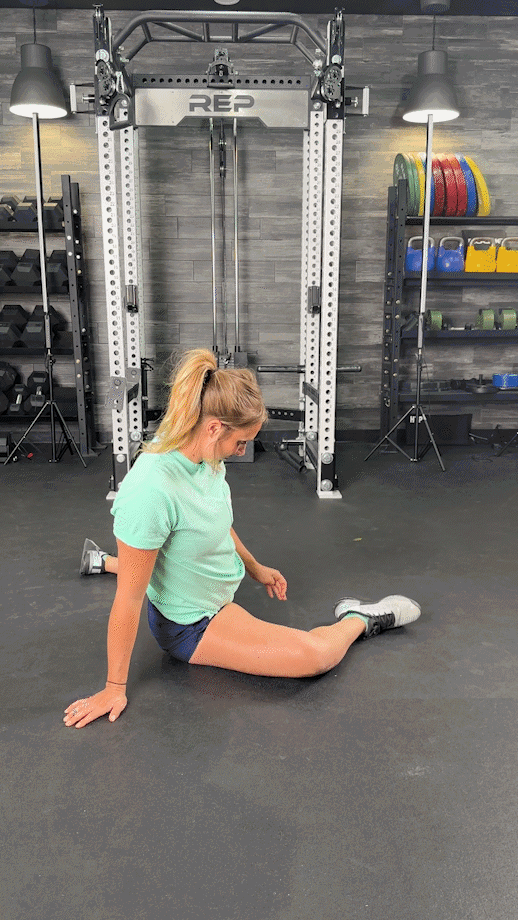
Pigeon Pose with Quad Stretch
Why do it: “You can take your pigeon pose to the next level by adding a quad stretch to your back leg,” says Kate. “It’s challenging, but getting into this position provides the same great stretch to your hip flexors while lengthening the quadriceps simultaneously.”
How to do it:
- Slowly enter the pigeon pose following the steps above.
- Lift your back leg into the air by bending your back knee and gripping your foot with one hand. If lifting your right foot, grip with your right hand and vice versa.
- Hold for 15 to 30 seconds, then release.
- Repeat the stretch on your other side.
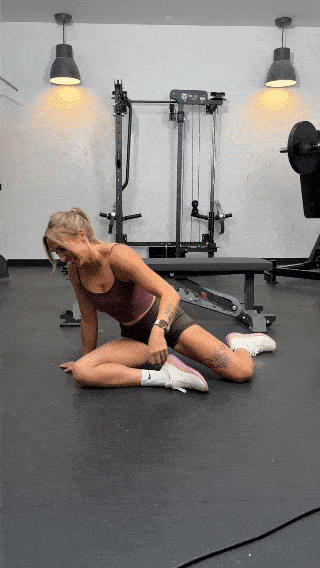
Benefits of the Couch Stretch
The couch stretch can make a highly beneficial addition to your mobility routine, and it’s not just because you can do it while you’re binge-watching your favorite streaming series from the sofa. Here are a few more important benefits of the couch stretch.
Helps Release Tight Hip Flexors
Tight hip flexors tend to restrict your range of motion (ROM), limiting your ability to fully extend the hips and potentially increasing your risk of injury. Doing hip flexor stretches may reduce this risk by decreasing muscle stiffness and improving your lower body range of motion.
According to a 2019 study in the Journal of Strength and Conditioning Research4, test subjects who completed a three-week static stretching program of the hip flexor muscle group showed an increase in their passive hip extension.
Additionally, a 2022 study in Cureus5 observed that proprioceptive neuromuscular facilitation (PNF) stretches like the couch stretch are “remarkably effective for loosening the tight iliopsoas,” a key hip flexor muscle.
May Reduce Lower Back and Knee Pain
Loosening those tight hip flexors with a comprehensive stretching and mobility routine may yield improvements for those suffering from low back pain. A study in the Brazilian Journal of Physical Therapy6 observed that addressing hip flexor tightness through hip flexor exercises resulted in decreased pain and disability in patients with lower back pain.
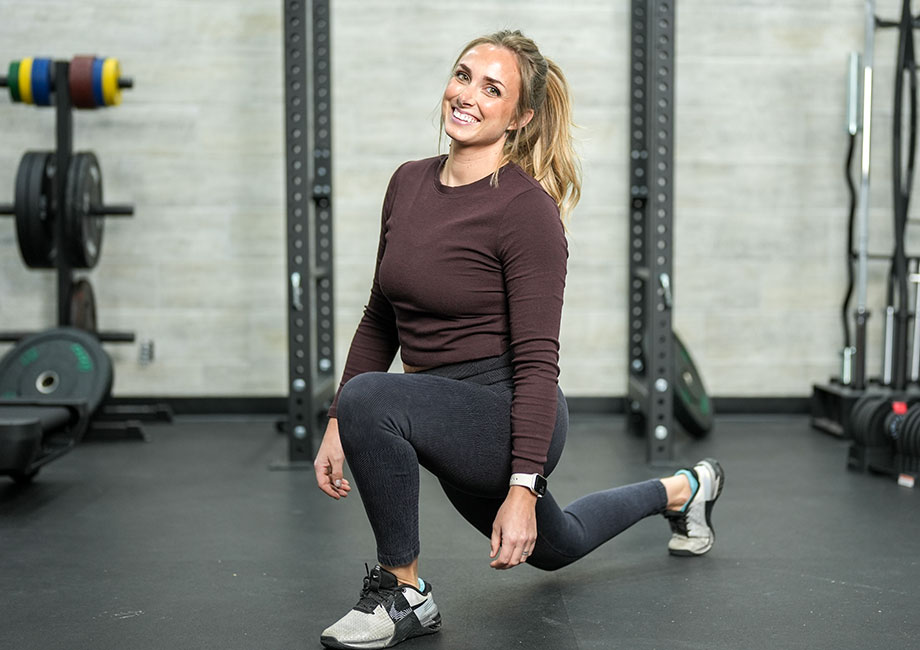
That’s not all; an earlier study in the same publication7 found that targeting and strengthening the hips reduced knee pain for individuals with patellofemoral pain syndrome, indicating that hip stretches and exercises may also help decrease knee pain.
May Help Improve Posture
According to the Journal of Manipulative and Physiological Therapeutics8, “hip muscle stretching may lead to immediate reductions in pelvic tilt during relaxed standing,” which means stretches like the couch stretch “could play an important role in interventions designed to improve standing postural alignment.”
So, if you slouch, try the couch!
RELATED: Benefits of Good Posture
Common Couch Stretch Mistakes
You’ll only enjoy the many benefits associated with the couch stretch if you’re performing the stretch regularly and with proper form. Here are a few common mistakes to avoid.
Arching or Round Your Back
When performed properly, your neck and spine are neutrally aligned, allowing you to drive your hips forward and intensify the stretch to your lower-body muscle groups without causing harm. However, many people rush to get into position and wind up hunching forward or arching their back, both are incorrect and may result in injury.
“Place a mirror next to the couch, ask a friend to record you, or consult a personal trainer to make sure your upper body looks correct,” says Kate Meier, NASM-CPT, USAW-L1, CF-L1. “It may feel right, but being able to see yourself from the side will help you quickly tell for sure.”
RELATED: Thoracic Mobility Exercises
Not Squaring Your Hips
If you have really tight hip flexors or regular mobility issues, you may be working overtime trying to keep your hips from rotating outward as you enter the position. So, you’ll want to take a minute and check in with yourself before driving your hips and leaning into the stretch, making sure your hips are square with the front of the room.
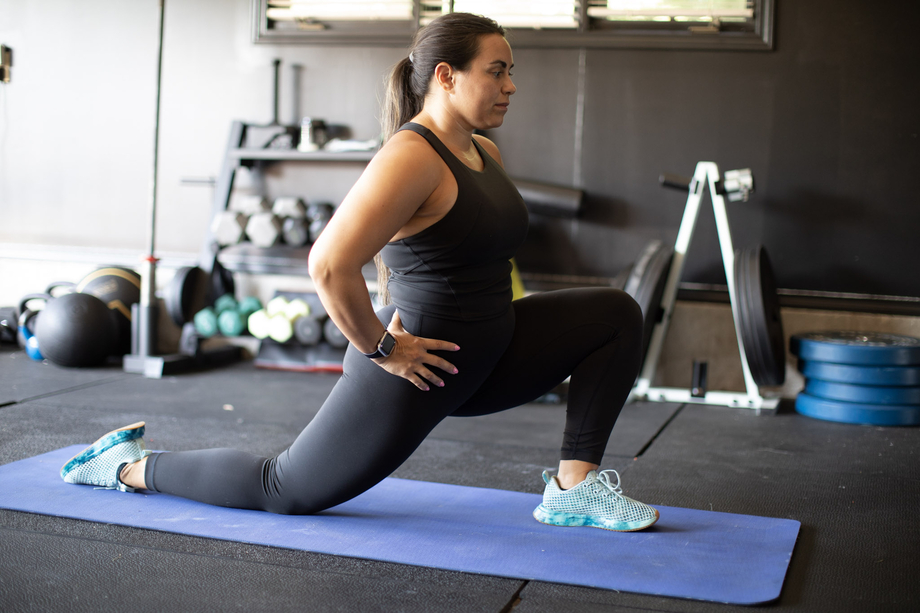
“If you find it too challenging to do that or you’re physically unable, regress to a low couch stretch or try some more beginner-friendly hip openers, like the 90-90 or butterfly stretches, to work your way up to it,” recommends Kate.
Not Breathing Through the Stretch
The point is to relax your body, relax your muscles, and just relax in general, but that’s going to be hard if you’re holding your breath. Holding your breath stresses your body by overstimulating the sympathetic nervous system, increasing your blood pressure, and depriving you of the oxygen your body needs to function.
Not to mention diminishing the effects of your stretch if you’re sending your body into panic mode instead of easing into things nicely. Move slowly into your stretch and count your breaths to ensure you’re breathing in deeply as you get into position.
RELATED: Exercise and Stress
Muscles Worked by the Couch Stretch
The couch stretch is effective at targeting, lengthening, and strengthening numerous muscle groups, including:
- Hip flexors: Your hip flexors, which include the iliacus, psoas major, psoas minor, and sartorius muscles, are receiving the most benefit from the couch stretch. They are responsible for flexing and stabilizing your hips.
- Glutes: Your glute muscles also work to control your hips, and you’ll be squeezing that tush when you reach the end position of your couch stretch to drive your hips forward and intensify the stretch’s effect.
- Quadriceps: While they’re mostly responsible for extending your knees, your quadriceps, namely the rectus femoris, contribute to hip flexion and stabilization.
- Hamstrings: You’ll mostly feel the couch stretch elsewhere, but you may feel a minor hamstring stretch while in the position, which contributes to greater overall hip and knee function while also providing relief from tight hamstrings.
Couch Stretch: Final Thoughts
We know that exercise is sometimes the last thing you want to do when you finally get home after a long day. Thankfully, the couch stretch lets you relax and get in a little fitness time by stretching many of your lower-body muscle groups. You can release hip flexor tightness, engage your core and glutes, relieve lower back and knee pain, and improve your posture, all while catching up on your favorite shows.
So, if you’re ready to Net-fix your tight hip flexors, give the couch stretch a try!
Couch Stretch: FAQs
What does the couch stretch do?
The couch stretch is a convenient stretch that targets and releases tight hip flexors to reduce lower back and knee pain, increase lower body mobility, reduce your risk of injury, and provide many other general improvements to your health and wellness.
Can I do the couch stretch every day?
Yes, the couch stretch should be safe to do every day, provided you don’t aggravate the muscle by stretching it too far or too aggressively.
How do you regress the couch stretch?
Lazing about on the couch is easy, but the couch stretch may not be if you’re unaccustomed to mobility exercises. Here are a few regressions that may make the stretch easy when you’re first starting:
–Get low: Start with a low couch stretch by performing a low lunge on the floor, keeping your hands on the floor for support, and placing your back foot on the seat cushion.
–Move your knee away from the seatback: The closer your knee is to the back of the couch, the more intense the stretch. So, if you’re still struggling, start with a little bit of distance between your knee and the back of the couch.
–Use a yoga block: Yogis aren’t shy about grabbing a yoga block when having issues with triangle poses, extended side angles, and other yoga poses. Take a page from their playbook and place your hand on a yoga block to maneuver into the stretch.
Remember—the couch stretch may be challenging if you have chronically tight hip flexors or are new to mobility exercises in general, but it shouldn’t hurt. Feel free to modify the movement to cater to your fitness level and comfort, and when in doubt, consider working with a qualified fitness professional.
RELATED: Best Online Personal Trainers
References
- Boukabache A, Preece SJ, Brookes N. Prolonged sitting and physical inactivity are associated with limited hip extension: A cross-sectional study. Musculoskelet Sci Pract. 2021;51:102282. doi:10.1016/j.msksp.2020.102282
- Konrad A, Močnik R, Titze S, Nakamura M, Tilp M. The Influence of Stretching the Hip Flexor Muscles on Performance Parameters. A Systematic Review with Meta-Analysis. Int J Environ Res Public Health. 2021;18(4):1936. Published 2021 Feb 17. doi:10.3390/ijerph18041936
- Anderson, S. (2014, June 26). Kapotasana: Pigeon Pose. Home. Retrieved October 9, 2024, from https://yogainternational.com/article/view/kapotasana-pigeon-pose
- Mettler JH, Shapiro R, Pohl MB. Effects of a Hip Flexor Stretching Program on Running Kinematics in Individuals With Limited Passive Hip Extension. J Strength Cond Res. 2019;33(12):3338-3344. doi:10.1519/JSC.0000000000002586
- Lakkadsha TM, Qureshi MI, Kovela RK, Saifee SS, Lalwani SS. Efficacy of Single Stretching Session of Iliopsoas Using Proprioceptive Neuromuscular Facilitation Versus Muscle Energy Technique on Low Back Pain in Patients With Lumbar Hyper-Lordosis. Cureus. 2022;14(8):e27916. Published 2022 Aug 12. doi:10.7759/cureus.27916
- Ceballos-Laita L, Estébanez-de-Miguel E, Jiménez-Rejano JJ, Bueno-Gracia E, Jiménez-Del-Barrio S. The effectiveness of hip interventions in patients with low-back pain: A systematic review and meta-analysis. Braz J Phys Ther. 2023;27(2):100502. doi:10.1016/j.bjpt.2023.100502
- Santos TR, Oliveira BA, Ocarino JM, Holt KG, Fonseca ST. Effectiveness of hip muscle strengthening in patellofemoral pain syndrome patients: a systematic review. Braz J Phys Ther. 2015;19(3):167-176. doi:10.1590/bjpt-rbf.2014.0089
- Preece SJ, Tan YF, Alghamdi TDA, Arnall FA. Comparison of Pelvic Tilt Before and After Hip Flexor Stretching in Healthy Adults. J Manipulative Physiol Ther. 2021;44(4):289-294. doi:10.1016/j.jmpt.2020.09.006
Further reading

Looking to knock out some great hamstring exercises at home? Our guide walks you through nine workouts you can do with minimal equipment. Read more

Looking for affordable equipment for your garage gym? Check out our exclusive Gym Bro Fitness coupon code to save on your next purchase. Read more

In our Condor Sentry Plate Carrier review, we’ll look at this budget-friendly weighted vest that’s also a great entry into the world of plate carriers. Read more

Debating elliptical vs running for your next cardio workout? We asked a conditioning specialist for their thoughts on which best fits your program. Read more

